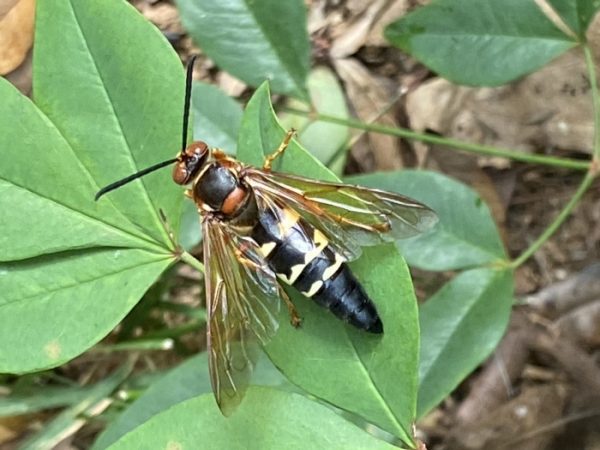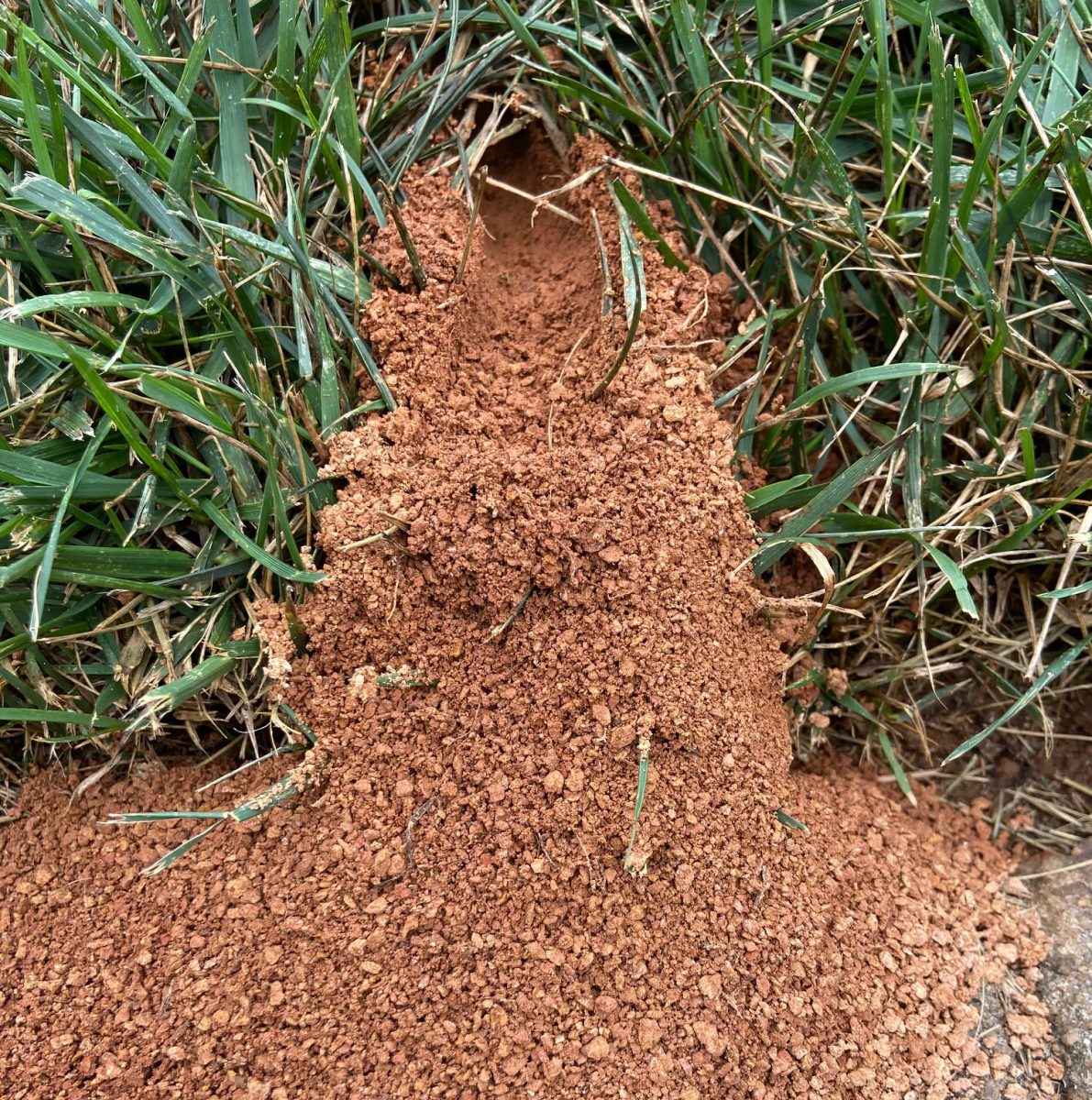They have a scary name, but ‘cicada killers’ are harmless helpers

With fewer cars on the road and airplanes in the sky, I’ve enjoyed the sounds of summer even more, namely the chorus of cicadas in my leafy neighborhood. The male’s love song is loud and urgent – more Def Leppard than James Taylor – but to my ears, it is the soundtrack of lazy summer days. They lift up their song, but it quickly trails off, as if it is simply too much effort in the face of unrelenting heat and humidity.
But the cicadas themselves lead lives that are far from relaxed and carefree. They’re frantic to attract a mate and reproduce in a matter of weeks. And their brief life span is threatened by a wide range of predators, such as mammals, birds and reptiles. Even humans sometimes snack on them. But there’s one insect so accomplished at its gruesome task, it has earned the name “cicada killer.”
The largest solitary wasp in our state, female cicada killers (Sphecius speciosus) can grow up to two inches long and weigh about one gram. Males are smaller and lighter. They emerge from their underground burrows first, generally early July in the Piedmont. For a couple of weeks, they zip around quaffing nectar and brawling over territory, like a protracted bachelor party. They’re handsome devils – a black and yellow banded abdomen and a rusty thorax and wings – but they don’t even have a stinger.
When the females finally emerge, they mate only once. Then the ladies get down to business. Cicada killers often congregate in suitable habitat – southeast-facing slopes with sparse vegetation near deciduous trees – but they aren’t colonial nesters like paper wasps or yellowjackets. Each female excavates her own burrow, which can be over three feet long with more than a dozen chambers. At the entrance, she lays out a U-shaped welcome mat of excavated dirt.
Once the burrow is finished, she begins to hunt. Her prey greatly outweighs her, but she subdues the ill-fated creature with a stinger the size of a rose thorn. She then hauls the paralyzed cicada into a chamber and lays a single egg. She knows its sex of the future cicada killer within the egg prior to it hatching, and she supplies a future male with one cicada and a female with two or three. When the eggs hatch, they slowly and painfully consume the living cicada.
[Read more: Charlotte’s tree canopy loss]
In her lifetime, a female might capture 100 cicadas. That’s good news for the tree huggers among us. Cicadas deposit their eggs into the stems of deciduous trees, causing branches to die. After the eggs hatch, the nymphs fall to the ground, then tunnel down and feed on the roots. This generally isn’t a problem for a healthy, established tree, but saplings can be especially vulnerable. In fact, in areas with dense populations of periodic cicadas – the ones that appear every 13 or 17 years – people who run orchards, vineyards or ornamental tree operations are advised to refrain from new plantings a year or two before they emerge.
So if you cross paths with a cicada killer in the coming weeks, be grateful for their role in preserving our threatened tree canopy. There is certainly no need to be alarmed. Unlike yellow jackets, cicada killers are rarely aggressive toward humans. And please don’t mistake them for “murder hornets.” (Click here to see a comparison). When the Asian giant hornets were in the news this spring, I wondered if exterminators had started receiving needlessly frantic calls.
“Not yet,” said Erin Burkhead, customer service associate with Truly Nolen in Charlotte. “One person has called about European hornets, but no more calls than usual about cicada killers.”

A cicada killer burrow in Charlotte. Photo: Ruth Ann Grissom
In most cases, Burkhead says, they advise people to co-exist with cicada killers. They level with potential customers – it can be expensive and difficult to get rid of them. “If you have them, there’s a good chance your neighbors do as well,” she said. “So if you’re the only one who treats them, they’ll come back eventually.”
Chuck Holliday, Professor Emeritus at Lafayette College and an authority on cicada killers, concurs. “I believe that you are in more danger from pesticides applied to your lawn to kill cicada killers than from the wasps,” he writes on his website. He suggests going after them with a badminton racquet.
There’s also the option of just waiting them out; they’ll be gone by early September.
On my regular route around my neighborhood, I see cicada killers in the same spots year after year. On one block in particular, they appear to populate the yards of all four houses. They whiz by as we make our way down the sidewalk, sometimes hovering briefly as if to inspect us or our dogs, but they’ve never threatened to land or sting.
So there’s really no reason to fear these killers. Unless you’re a cicada. In that case, be afraid. Be very afraid.